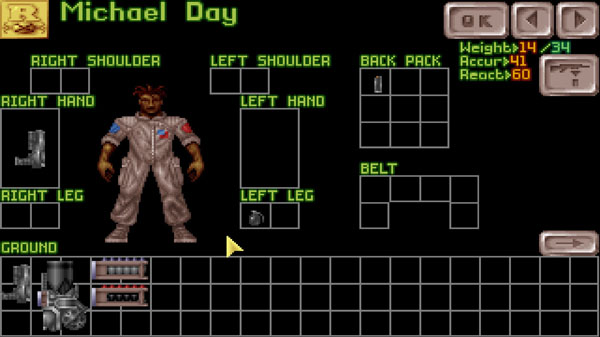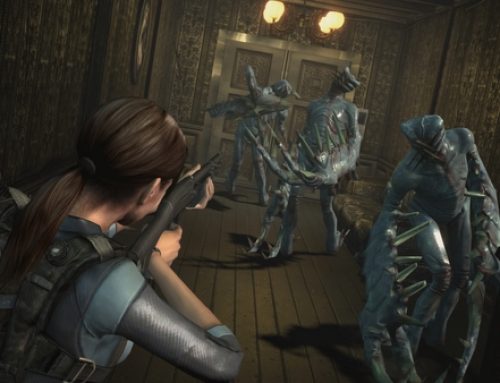
Classic PC strategy game "X-COM: UFO Defense" was made before the era of in-game tutorials, making it daunting and impenetrable for less patient gamers.
Like Hollywood, the video game industry is discovering there’s value in dusting off long-dormant franchises in search of a modern-day hit. Where moviegoers have in recent years been offered remakes including “Tron” and “Planet of the Apes,” gamers this year will get reboots of “Syndicate” and “X-COM.”
These new games, “Syndicate” from Starbreeze Studios, and “XCOM: Enemy Unknown” from 2K-owned Firaxis Games, come with some risk. The first “Syndicate,” released in 1993, and the original “X-COM: UFO Defense,” from 1994, are beloved strategy games that use a classic isometric view. (Isometric views are a sort of blend of a bird’s-eye view and a third-person, over-the-shoulder-style perspective.)
Those familiar with recent gaming history know strategy games and isometric views are about as popular these days as cell phones without data plans. While we still get the occasional high-profile strategy game like “Starcraft 2” or “Sid Meier’s Civilization V,” their sales figures are much smaller than those of blockbuster online shooters like “Call of Duty: Modern Warfare 3” and “Battlefield 3.”
Even though it was disheartening to the hardcore niche of strategy-game players, it wasn’t surprising when it was announced the new “XCOM” and “Syndicate” would be action-oriented first-person shooters, not tactical strategy games. Despite sharing a setting with their mid-‘90s predecessors, the reboots were derided by some as attempts to cash in on brand names rather than full-fledged successors.
After fans of the old “X-COM” games revolted en masse at the thought of an “XCOM” first-person shooter, 2K and Firaxis, which makes the “Civilization” games, announced “X-COM: Enemy Unknown” late last year. While an “XCOM” shooter is still on tap, “Enemy Unknown” will adhere more closely to the original “X-COM” games. It’s due out this fall. (While plenty of folks freaked out about the change in genre, I might be the only one annoyed at having to hyphenate “X-COM” when talking about the old games while writing “XCOM” for the modern-day titles.)
I’m willing to judge the new “Syndicate” and “XCOMs” on their own merits. They may not hew closely to gameplay conventions that were popular 18 years ago, but then again, they’re not military-themed shooters about taking down terrorists in Russia, Vegas or Tajikistan. They’re different enough for me.
That said, as a fan of strategy games like “Civilization,” “Warcraft 2” and “Valkyria Chronicles,” I’ve long been aware of “X-COM: UFO Defense’s” classic status. A friend who’s my wingman in countless online multiplayer games speaks fondly of “UFO Defense,” one of the first games he ever bought when he started gaming on PCs. Given that you can buy the game via digital download service Steam for a few dollars, I snapped it up with the idea of trying it out as “homework” before “Enemy Unknown” and 2K Marin’s shooter hit retail.
Of course, “UFO Defense” was designed to be played on PCs running DOS, not Windows 7, so just getting the game in an optimal playable state took a bit of work. When I launched the game cold after downloading, my mouse could barely navigate the interface. Thankfully, the Steam forums were immensely helpful in getting “UFO Defense” to run capably on my PC. After downloading a few patches and moving around some files, I was able to get the game in a playable, even enjoyable state. (Note: Like a lot of classic DOS games, “X-COM: UFO Defense” runs via the DosBox emulator.)
Once you get “UFO Defense” running, it’s clear immediately how much gaming has changed since 1994. The game throws you right into a zoomed-out view of Earth, instructing you to choose a location for your first base. There’s no advice on where to put the base; nor is there any explanation of what the base does, or what purpose the myriad menus serve. As you stare blankly at the screen wondering what to do, a clock advances in the lower right-hand corner of the screen. (Nothing stresses out a journalist used to working on deadline more than a clock or timer.)
Like a lot of games of its era, the tutorials for “UFO Defense” can be found in the game’s beefy, 133-page manual. The tutorial on the “geoscape,” the zoomed out view of Earth, is 11 pages and designed to get you to your first battle with aliens. The battle tutorial takes up 16 pages. It seems the optimal way to learn how to play “UFO Defense” is to sit there with the manual in your lap, reading instructions and looking back out at the screen as you figure out how to apply them. It’s a frustrating, obtuse process that has no analog in modern gaming. (A third tutorial, on researching new technology and developing weapons, is 13 pages.)
At a certain point, learning to play “UFO Defense” via printed tutorials felt more like building extremely complicated IKEA furniture than it did playing a video game. I gave up after a couple of hours of futzing. I can appreciate the game design behind “UFO Defense,” but if I play it again, it’s going to be with someone who knows the ropes standing over my shoulder. In the meantime, I’ll lick my wounds and look ahead to “XCOM: Enemy Lines” this fall.
The “Syndicate” reboot is due out Feb. 21. I’m almost a little afraid to try the copy of the original that I downloaded from GOG.com for the princely sum of $6. Wish me luck, and feel free to call me a weakling.
Follow Eric Wittmershaus on Twitter and join the GameWit blog group on Facebook.



